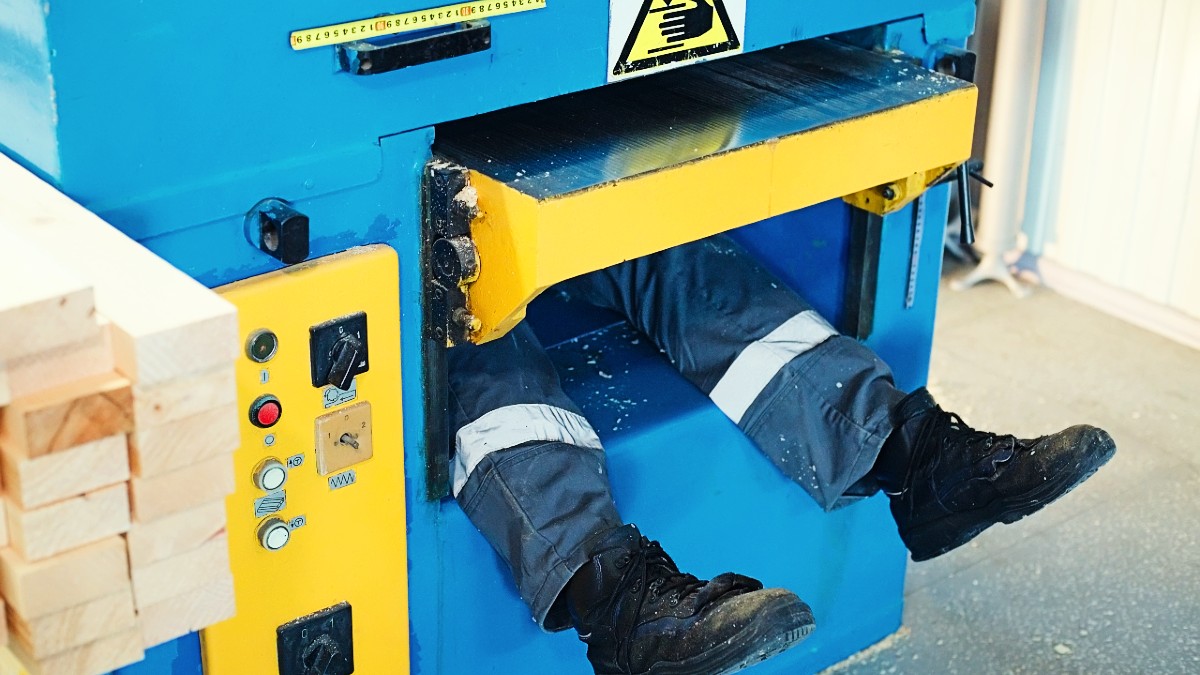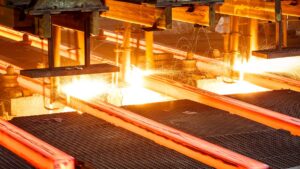A big bureaucratic machine is making sure iron ore stocks get sucked down under

He's not ok. Pic: Getty Images
- Iron ore prices briefly dipped south of US$100/t on Tuesday
- It’s a worrying sign for Aussie iron ore miners, with port stocks in China also hitting two year highs
- Iron ore be oversupplied in the years ahead with the ramp up of the Simandou mine in Guinea
On Tuesday in Singapore iron ore futures just seemed to have had enough of waiting for China to fix its economic problems.
The giant Aussie diggers continue to try ramp up production, while the world’s keenest consumers of iron ore – China and its usually bubbly property sector – look done and dusted
By about 6pm Tuesday in Sydney, when local traders were busy washing the day’s mining losses off their minds, Singapore futures had tumbled more than 3.6% to $99.85. They ended at US$99.41/t before the customary cat-like bounce to US$100.85/t yesterday arvo.
100: Surely a psychological level of immense disturbia, if ever a technical analyst wanted to show me one.
This is where the local iron ore majors are at in 2024.

State of play
There are problems here, not easily fixed.
With significant new supply of iron ore coming online over the next few years, some analysts say the global market will enter a period of major oversupply later this decade, with falling prices for producers and declining revenues for everyone with skin in the game of Australia’s biggest export.
According to MySteel’s latest survey, the full inventories of imported iron ore “piled at the 45 Chinese major ports under Mysteel’s tracking” scaled a high last touched in April 2022.
The volume rose by another 1.4 million tonnes or 0.9% on week to reach 151.3 million tonnes as of July 18.
Iron ore portside stocks had extended increases for four consecutive weeks, mainly due to rising ore carrier arrivals during the past few weeks.
And the world’s biggest exporter Rio Tinto (ASX:RIO) needs to ramp up output through the second half to make guidance, raising the prospect those stockpiles will get more rotund.
Chuck in the usual seasonal slow down occurring at a time when inventories should be drawing fast and markets will react.
Like they did in China on Tuesday, too.
By the close in Dalian, iron ore contracts for August followed similar collapses in steel rebar and hot-rolled coil futures further east in Shanghai.
While Singapore was rebounding yesterday, Dalian piled on the losses with the September contract down a further 1.73% at 7pm AEST.
With metals of all sorts in decline, no surprise then that the BHP (ASX:BHP) stock price ended Monday at its lowest level in about 20 months.
The selloff in copper surely didn’t help.
And sure China’s latest big policy nothing has done its bit as well.
Plenum-ty to worry about
After the non-event of the highly-anticipated Third Plenum, China’s central bank arrived late and surprised all with a few interest-rate cuts, almost apologising on behalf of the CCP following the great absence of any short-term stimulus.
The Third Plenum was historic in its disappointingness, so the People’s Bank of China (PboC) on Monday cut the 7-day reverse repo rate, a key short-term policy rate, in the first trim in 11 months.
Chinese banks followed the move about an hour later by lowering their main benchmark lending rates, making it cheaper to borrow for mortgages and other loans.
Still, markets on the mainland and in Hong Kong fell.
Sentiment remains about as fragile as the economy.
Meanwhile, metal prices are under renewed pressure, this time from a rebounding greenback, even though the US Fed has put a gun to its own head for September rate cuts at the latest.
Copper fell by more than US$50 on Tuesday to close at US$9166 in trade on the LME.
At the foundation of these falls are the same concerns around rising inventories, decent production.
And just absolutely tepid growth out of China.
A Plenum To Remembum
Beijing’s twice-a-decade conclave of Communist Party officials otherwise known as The Third Plenum*, which called it a week on Sunday, punted the golden goose for Aussie diggers and set in stone China’s strategic shift away from stimulating growth via giant infrastructure projects and debt-fuelled property splurging.
Instead, the communists want to reengineer China into a high-quality maker of clever things.
President Xi Jinping babbled on last week as only a totalitarian leader can, largely saying nothing apart from a few monotone threats to everyone, especially America, and sketched some sketchy plans about digging a few wildly indebted local governments out of their holes.
Nothing on boosting demand. Nothing about arresting the property mess.
This Third Plenum was supposed to be mega.
And this year had an extra urgency and import for action. China’s inert economy and its anaemic growth has rattled the cages for Beijing to drum up and deliver some actual policy initiatives to nullify the risks and overcome the challenges facing China’s long-term economic health.
Instead, the long-awaited Third Plenum Report released on Sunday largely traced over what’s already been said by Xi and Friends a thousand moribund times.
Xi’s ideas around development and structural reform largely follows a script where China solves its current problems with a moonshot tech, talent and trickery theme.
The report
The final report mapped out long-term party goals, but skipped the actual policy steps which might address China’s various economic obstacles.
The document – some 22k words of it – mentioned terms related to technology, talent, science and innovation about 160 times.
The actual seed of China’s current malaise, the property sector, only got a grand total of four mentions.
That’s a small room with a very large elephant, when, according to even the conservative estimates of the China Daily, the Chinese property sector contributes 20% of fiscal revenue, stores 70% of household wealth, sucks up 25% of bank loans and generates 24% of China’s entire GDP.
Iron ore, used to make the steel blown up when no one ends up living in those properties, is down more than 25% year to date, one of the worst performing major commodities among a lot of underperformers.
With silence on the stimulus front, the global seaborne market flush with floating shipments and Chinese ports like Ningbo looking bloated with growing stockpiles, the thinking in many quarters is China’s monstrous hunger for iron ore is unlikely to return and we are officially through the commodity looking glass.
BHP itself thinks, while steel production in China remains close to all time highs, that we are in a plateau phase, while Rio has already called peak China steel.
The transition-focussed Institute for Energy Economics and Financial Analysis says we’re well past peak iron ore in this country.
Rio Tinto’s approval of its Simandou project in Guinea is the latest, largest wave of a growing domestic iron ore supply boom.
At the same time, IEEFA says it’s becoming ever more apparent that China’s iron ore demand is in decline now that it is past peak steel demand.
“China will also seek to recycle more steel going forward, further reducing iron ore demand from the country that produces most of the world’s steel. As a result, the global seaborne iron ore market is about to enter a period of significant oversupply and lower prices,” IEEFA lead steel analyst Simon Nicholas said.
“On top of this, the steel technology transition from blast furnaces to direct reduced iron (DRI)-based steelmaking will shift the demand profile towards higher-grade iron ore.”
Just smply digging and shipping won’t work so good for us anymore, IEEFA says.
“Now is a good time for Australia to seriously think about what its iron ore sector needs to look like going forward,” he said.
*Know your Plenums
1. The first, second and seventh plenums typically focus on the power transition between Central Committees.
2. The fourth and sixth plenums generally centre on party ideology.
3. The third plenum has focused on long-term economic reforms.
4. The fifth plenum is associated with deliberations for the country’s five-year development plans.
UNLOCK INSIGHTS
Discover the untold stories of emerging ASX stocks.
Daily news and expert analysis, it's free to subscribe.
By proceeding, you confirm you understand that we handle personal information in accordance with our Privacy Policy.








